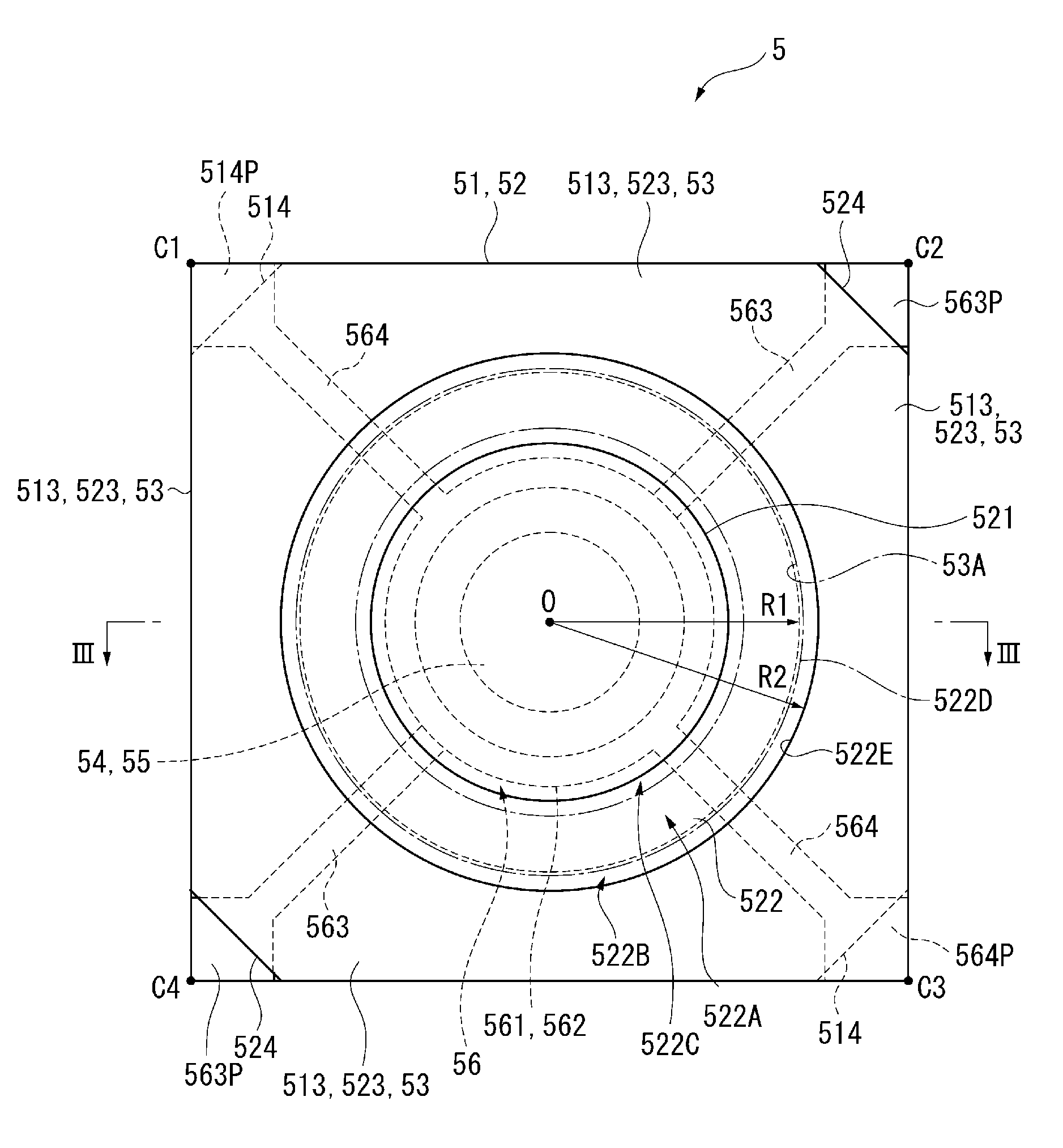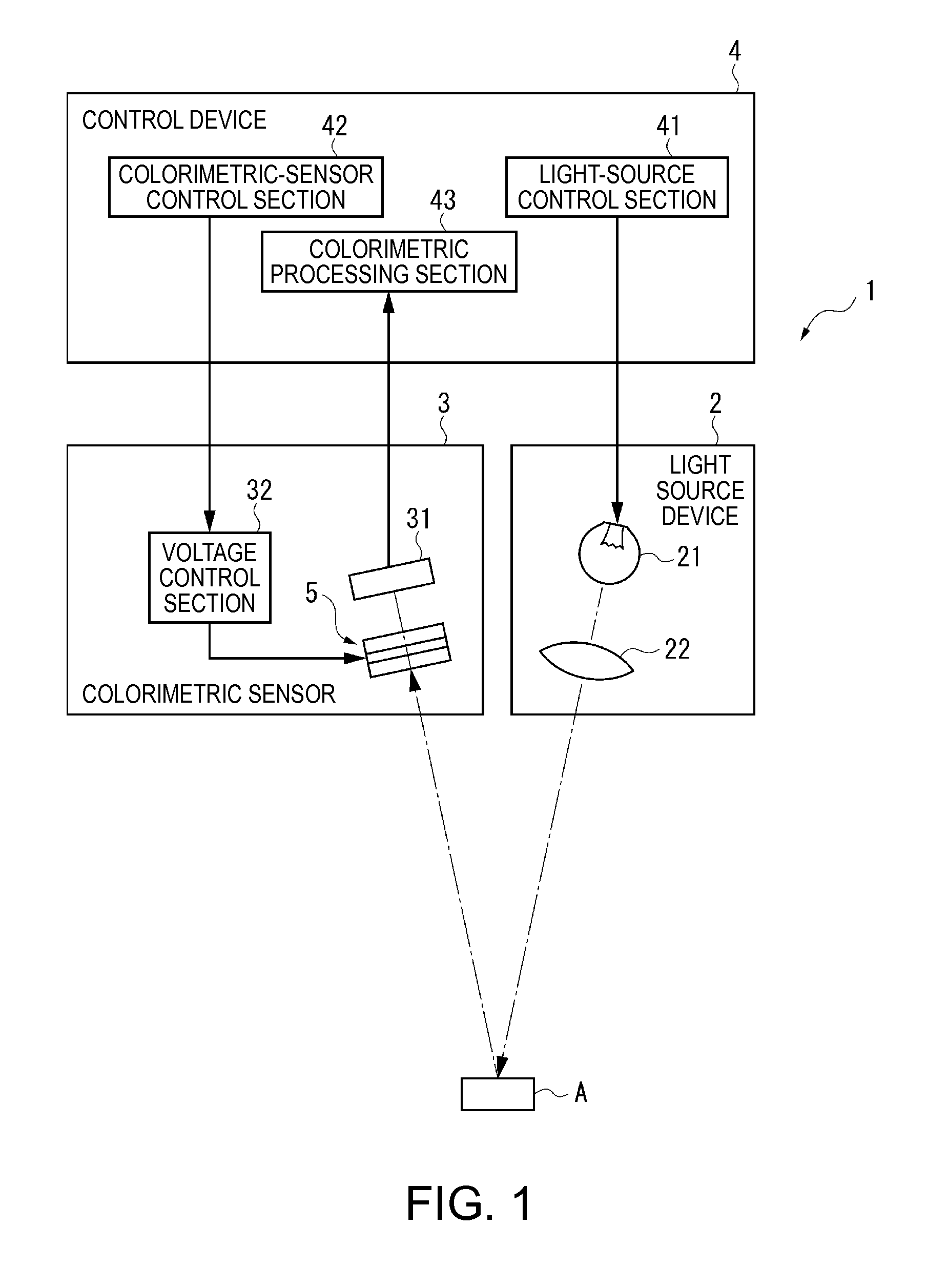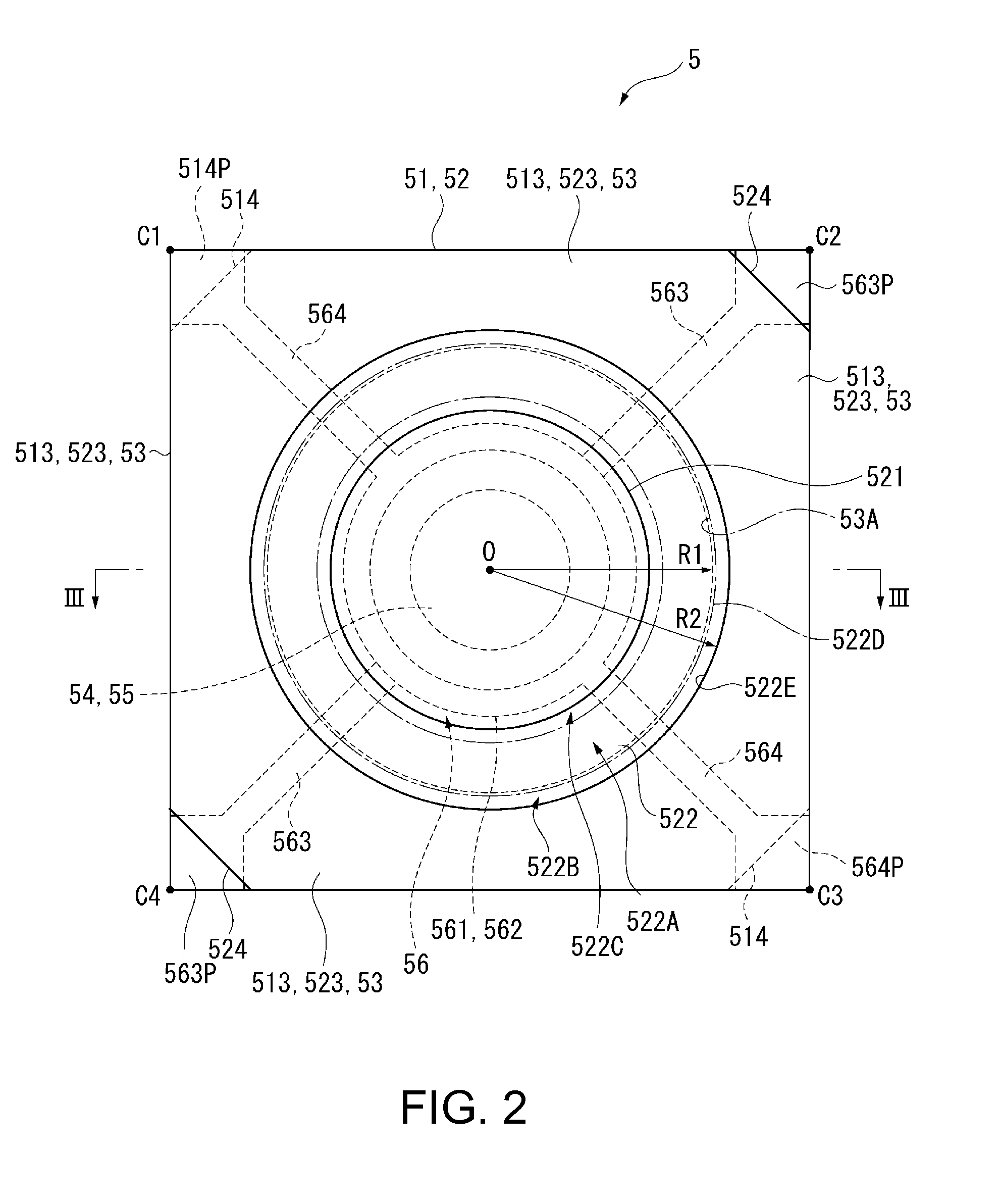Wavelength variable interference filter, optical filter device, optical module, electronic apparatus, and method of manufacturing the wavelength variable interference filter
a wavelength variable interference and filter technology, applied in the field of wavelength variable interference filters, can solve the problems of difficult bending of the movable section, insufficient bonding strength between the first substrate and the second substrate, and less impact from the outside, so as to achieve accurate parallel relation, improve processing accuracy, and high resolution
- Summary
- Abstract
- Description
- Claims
- Application Information
AI Technical Summary
Benefits of technology
Problems solved by technology
Method used
Image
Examples
first embodiment
[0051]A first embodiment of the invention is explained below with reference to the accompanying drawings.
1. Schematic Configuration of a Colorimetric Apparatus
[0052]FIG. 1 is a block diagram of a schematic configuration of a colorimetric apparatus 1 (an electronic apparatus) according to this embodiment.
[0053]The colorimetric apparatus 1 includes, as shown in FIG. 1, a light source device 2 that emits light to an inspection target A, a colorimetric sensor 3 (an optical module), and a control device 4 that controls an overall operation of the colorimetric apparatus 1. The colorimetric apparatus 1 is an apparatus that reflects the light emitted from the light source device 2 on the inspection target A, receives reflected inspection target light in the colorimetric sensor 3, and analyzes and measures the chromaticity of the inspection target light, i.e., a color of the inspection target A on the basis of a detection signal output from the colorimetric sensor 3.
2. Configuration of the L...
second embodiment
[0120]A second embodiment of the invention is explained with reference to the accompanying drawings.
[0121]In the colorimetric apparatus 1 according to the first embodiment, the wavelength variable interference filter 5 is directly provided in the colorimetric sensor 3, which is the optical module. In this case, the wavelength variable interference filter 5 is provided in a predetermined arrangement position provided in the colorimetric sensor 3. Wiring is carried out for the fixed electrode pads 563P and the movable electrode pads 564P. However, some optical module has a complicated configuration. In particular, it is sometimes difficult to directly provide the wavelength variable interference filter 5 in a small optical module. In this embodiment, an optical filter device that enables the wavelength variable interference filter 5 to be easily set even in such an optical module is explained below.
[0122]FIG. 11 is a sectional view showing a schematic configuration of the optical filt...
PUM
| Property | Measurement | Unit |
|---|---|---|
| thickness | aaaaa | aaaaa |
| curvature radius | aaaaa | aaaaa |
| thickness | aaaaa | aaaaa |
Abstract
Description
Claims
Application Information
 Login to View More
Login to View More - R&D
- Intellectual Property
- Life Sciences
- Materials
- Tech Scout
- Unparalleled Data Quality
- Higher Quality Content
- 60% Fewer Hallucinations
Browse by: Latest US Patents, China's latest patents, Technical Efficacy Thesaurus, Application Domain, Technology Topic, Popular Technical Reports.
© 2025 PatSnap. All rights reserved.Legal|Privacy policy|Modern Slavery Act Transparency Statement|Sitemap|About US| Contact US: help@patsnap.com



